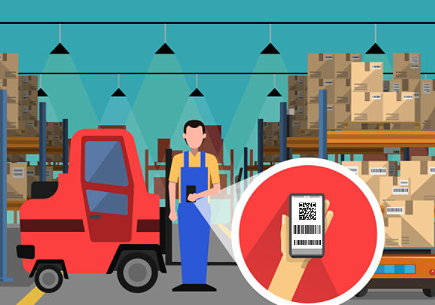Overview
In addition to managing mobile devices, you can use the Samsung Knox SDK to manage peripherals that are connected to or integrated with devices. Specifically, you can remotely and centrally automate the setup, monitoring, diagnostics, and control of peripherals in distributed locations.
Through peripherals such as barcode readers, you can also collect business and operational data for wide-ranging applications in sectors such as manufacturing, inventory, transportation, and retail.

Use cases
Here are some sample use cases for peripheral barcode readers:
- Inventory control — Through barcode data collection, you can reduce manual tracking inaccuracies, improve stock forecasting, optimize procurement efficiencies, and lower operational costs.
- Delivery tracking — Better operational technologies mean you can more effectively locate parcels, estimate arrival times, troubleshoot delays, register receipt, and improve the customer experience.
- Point-of-Sales transactions — Barcoding enables you to identify purchases instantly, maximize payment options, and expedite the reporting of customer sales, inventory levels, and sell-through rates.
Features
Through the Knox SDK, you can fully configure and manage both mobile devices and connected peripherals at the same time, easing development, testing, deployment, and later updates. The available peripheral features depends on the peripheral, but can include the following:
- Get available peripherals, peripheral info, connection profile, configuration.
- Configure connection profile, peripheral.
- Register listeners for barcode data, plugin info, peripheral info, peripheral state.
- Enable, disable, start, stop peripheral.
- Get stored data, clear memory.
Peripheral info can include the following:
- Peripheral — Type, manufacturer, model, name, serial number.
- Peripheral status — State, battery level, usage count, firmware update status.
- Vendor plugin — Vendor, name, package name, service name, version.
- Barcode — Type (1D, 2D), symbology (UPC, Code 39, EAN, and so on), options (start/stop characters, check digits, concatenation, and so on), process mode (store, wedge).
- Barcode options — Clear (first, last, all), reset (all data, system time), sync (system time).
- Connection — Type (Bluetooth, USB, internal), profile, state.
- Error types — Framework, peripheral, plugin errors.
Benefits
To help differentiate your holistic solutions, Samsung offers these additional benefits:
- Samsung devices — Samsung mobile devices integrate industry-leading technologies from multiple biometric authentication methods to professional-grade cameras to longer battery life. Devices like the XCover series also offer rugged cases and programmable buttons that can launch apps like MS Teams Walkie Talkie.
- Samsung Knox — Knox is known for providing devices with defense-grade security, which has been pivotal in the age of increasingly more sophisticated exploits and the need to protect corporate assets as well as consumer privacy. What is not as well known is that Knox also provides enterprise services, to enroll devices out-of-the-box, deploy company policies over the air, fully customize devices at the most granular feature setting, and manage firmware upgrades.
- Partner benefits — By joining our Partner Program, you can access our global end-to-end Technical Support, for device troubleshooting, app development, and service deployment. Depending on your partner tier, you can also receive joint business model, marketing, sponsorship, and funding opportunities with Samsung.
Where to start
| If you want to | See |
|---|---|
| See how Samsung Knox differentiates | Knox White Paper, Feature summary |
| Learn about the Knox SDK | About the Knox SDK, Release notes |
| Understand how to manage peripherals | How it works |
| Review instructions with sample code | Tutorial |
| Download a sample app | Get started with ISV APIs |
| Download a vendor peripheral plugin | Peripheral plugins |
| Browse the peripheral API calls | API reference |
| Find business opportunities | Partner Program |
On this page
Is this page helpful?